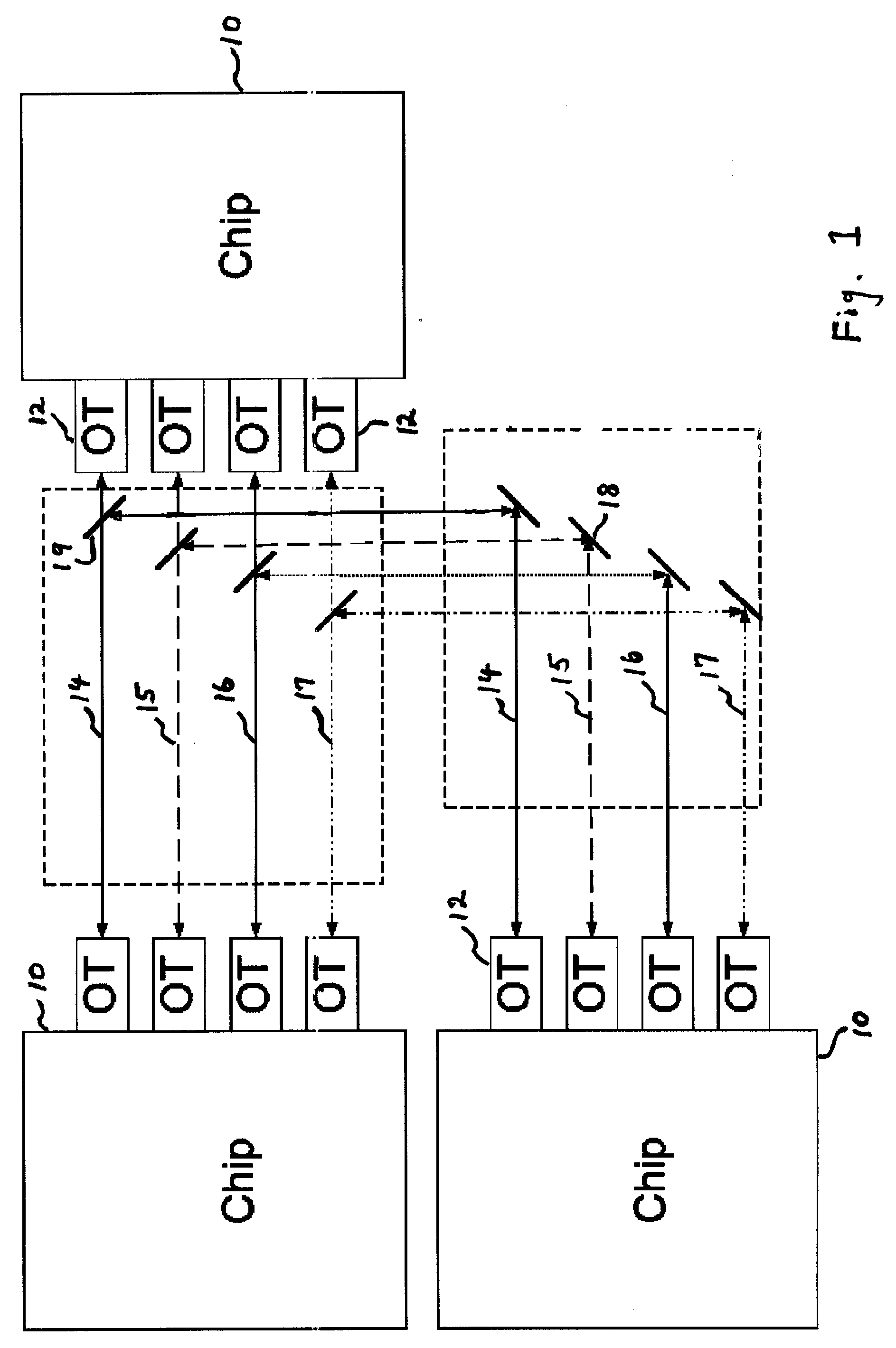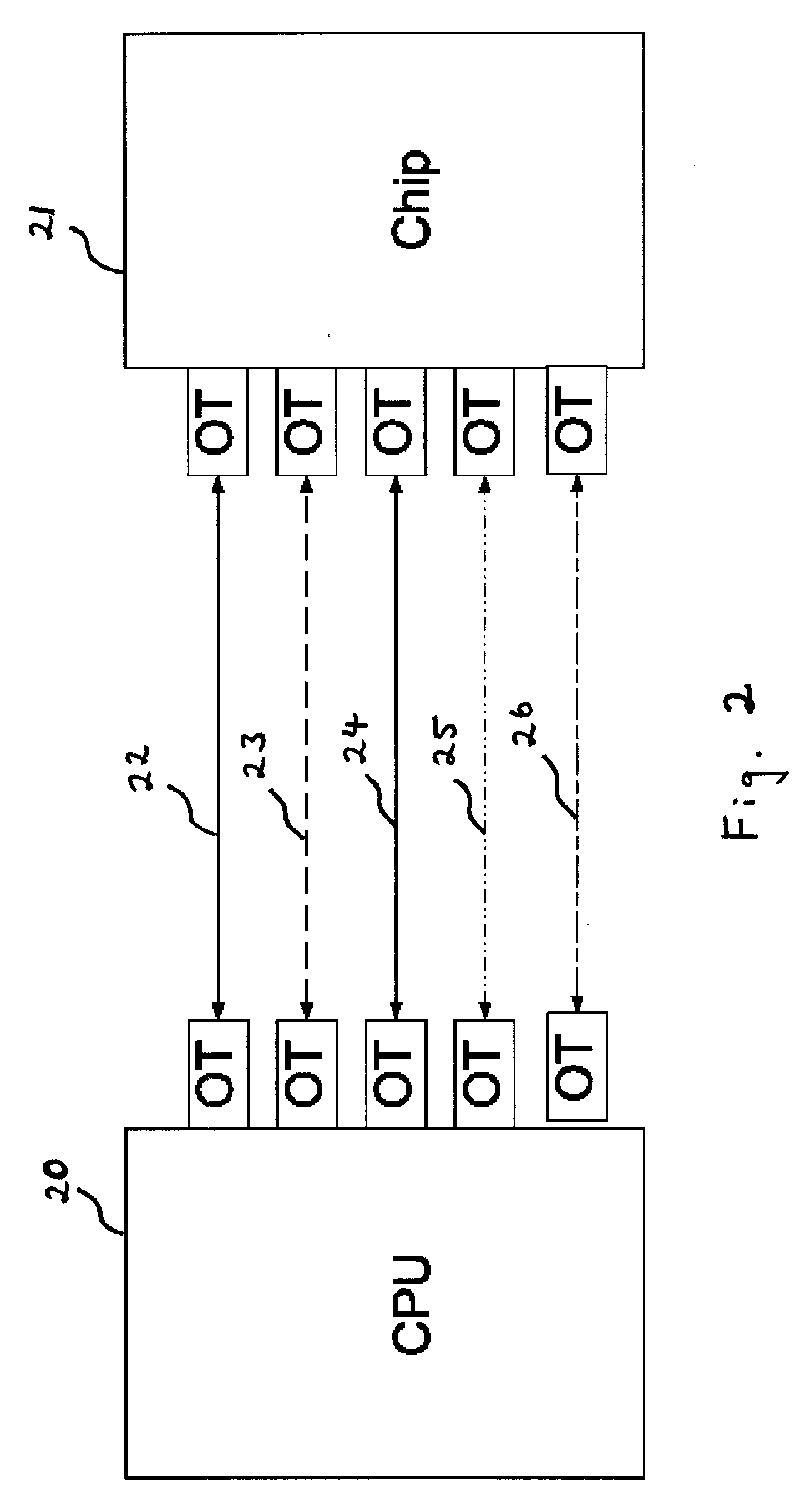Improved free space optical bus
a free space, optical bus technology, applied in multiplex communication, wireless communication, polarisation/directional diversity, etc., can solve the problems of increasing the handicap of rapid improvement of the ability to process data within a chip or computer or network element, the i/o elements of electrical chips do not scale according to moore's law, and the limitations of electrical communication, etc., to achieve the effect of ensuring the transmission quality of the bus
- Summary
- Abstract
- Description
- Claims
- Application Information
AI Technical Summary
Benefits of technology
Problems solved by technology
Method used
Image
Examples
Embodiment Construction
[0052] Reference is now made to FIG. 1, which illustrates schematically an optical wireless bus implemented to communicate, using the preferred methods of the present invention, between the various chips 10 of a computing system. Although only three chips are shown in FIG. 1, it is to be understood that the methods of the present invention are applicable on buses connecting any number of chips. The input / output functions of each of the chips are preferably implemented by means of optical transceivers OT, marked as items 12, though it is to be understood that separate receivers and transmitters may equally well be used. The communication lines between the various chips are implemented by means of optical transmission paths, and may be any of control lines 14, address lines 15, data lines 16 or any other auxiliary lines 17. Spatial redirection of the optical information may preferably be performed by means of arrays of mirrors 18, or, where signal splitting is required to direct the s...
PUM
 Login to View More
Login to View More Abstract
Description
Claims
Application Information
 Login to View More
Login to View More - R&D
- Intellectual Property
- Life Sciences
- Materials
- Tech Scout
- Unparalleled Data Quality
- Higher Quality Content
- 60% Fewer Hallucinations
Browse by: Latest US Patents, China's latest patents, Technical Efficacy Thesaurus, Application Domain, Technology Topic, Popular Technical Reports.
© 2025 PatSnap. All rights reserved.Legal|Privacy policy|Modern Slavery Act Transparency Statement|Sitemap|About US| Contact US: help@patsnap.com



